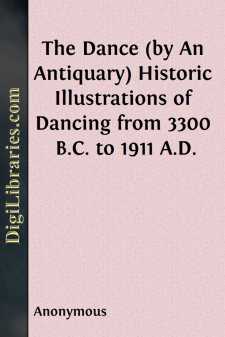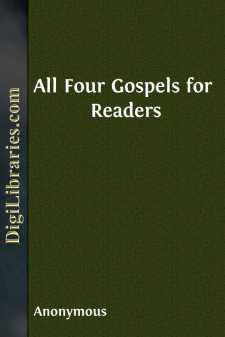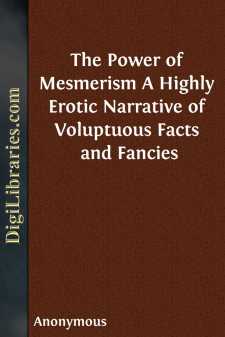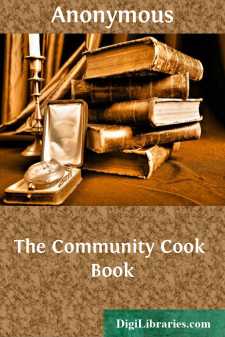Categories
- Antiques & Collectibles 13
- Architecture 36
- Art 48
- Bibles 22
- Biography & Autobiography 813
- Body, Mind & Spirit 142
- Business & Economics 28
- Children's Books 17
- Children's Fiction 14
- Computers 4
- Cooking 94
- Crafts & Hobbies 4
- Drama 346
- Education 46
- Family & Relationships 57
- Fiction 11829
- Games 19
- Gardening 17
- Health & Fitness 34
- History 1377
- House & Home 1
- Humor 147
- Juvenile Fiction 1873
- Juvenile Nonfiction 202
- Language Arts & Disciplines 88
- Law 16
- Literary Collections 686
- Literary Criticism 179
- Mathematics 13
- Medical 41
- Music 40
- Nature 179
- Non-Classifiable 1768
- Performing Arts 7
- Periodicals 1453
- Philosophy 64
- Photography 2
- Poetry 896
- Political Science 203
- Psychology 42
- Reference 154
- Religion 513
- Science 126
- Self-Help 84
- Social Science 81
- Sports & Recreation 34
- Study Aids 3
- Technology & Engineering 59
- Transportation 23
- Travel 463
- True Crime 29
The Dance (by An Antiquary) Historic Illustrations of Dancing from 3300 B.C. to 1911 A.D.
by: Anonymous
Description:
Excerpt
CHAPTER I.Egyptian, Assyrian, Hebrew, and Phoenician Dancing. The Ritual Dance of Egypt. Dancing Examples from Tomb of Ur-ari-en-Ptah, 6th Dynasty, British Museum. Description of Dancing from Sir G. Wilkinson; of the Egyptian Pipes and Hieroglyphics of Dancing, &c. Phoenician Round Dances, from a Limestone Group found at Cyprus, and Bronze Patera from Idalium, Cyprus.In this work it is not necessary to worry the reader with speculations as to the origin of dancing. There are other authorities easily accessible who have written upon this theme.
Dancing is probably one of the oldest arts. As soon as man was man he without doubt began to gesticulate with face, body, and limbs. How long it took to develop bodily gesticulation into an art no one can guess—perhaps a millennium.
In writing of dancing, one will therefore include those gesticulations or movements of the body suggesting an idea, whether it be the slow movement of marching, or the rapid gallop, even some of the movements that we commonly call acrobatic. It is not intended here to include the more sensual movements of the East and the debased antique.
Generally the antique dances were connected with a religious ritual conceived to be acceptable to the Gods. This connection between dancing and religious rites was common up to the 16th century. It still continues in some countries.
In some of the earliest designs which have come down to us the dancers moved, as stars, hand in hand round an altar, or person, representing the sun; either in a slow or stately method, or with rapid trained gestures, according to the ritual performed.
Dancing, music and poetry were inseparable. Dancing is the poetry of motion, and its connection with music, as the poetry of sound, occurs at all times. In our own day musical themes are marked by forms originally dance times, as waltz time, gavotte time, minuet time, etc.
Fig. 2: Greek figures in a solemn dance. From a vase at Berlin.Amongst the earliest representations that are comprehensible, we have certain Egyptian paintings, and some of these exhibit postures that evidently had even then a settled meaning, and were a phrase in the sentences of the art. Not only were they settled at such an early period (B.C. 3000, fig. 1) but they appear to have been accepted and handed down to succeeding generations (fig. 2), and what is remarkable in some countries, even to our own times. The accompanying illustrations from Egypt and Greece exhibit what was evidently a traditional attitude. The hand-in-hand dance is another of these.
The earliest accompaniments to dancing appear to have been the clapping of hands, the pipes,[] the guitar, the tambourine, the castanets, the cymbals, the tambour, and sometimes in the street, the drum.
The following account of Egyptian dancing is from Sir Gardiner Wilkinson's "Ancient Egypt"[]:—
Fig. 3: The hieroglyphics describe the dance."The dance consisted mostly of a succession of figures, in which the performers endeavoured to exhibit a great variety of gesture....












